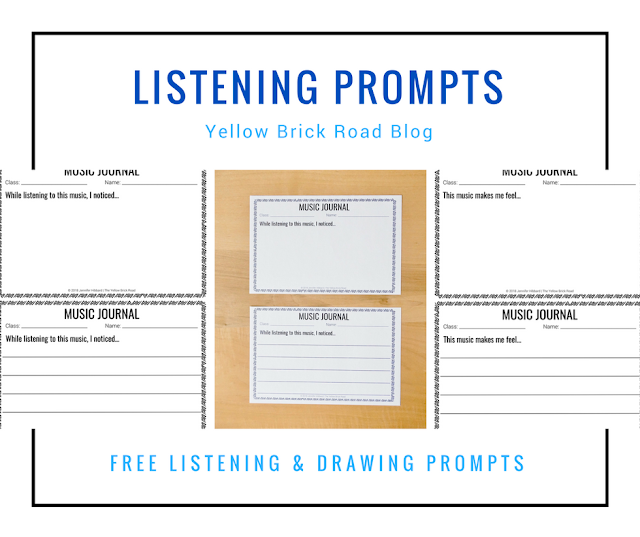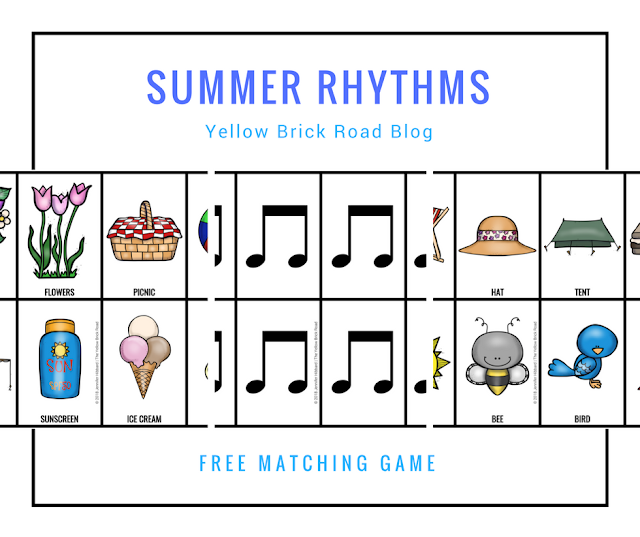The first time I tried centers in my classroom, it was a bit of a failure. The kids were confused and not practicing the musical concepts in the way I’d intended. I was hesitant to try again, but am so glad that I did. My students love centers, and I enjoy being able to observe their learning without being so hands-on. I hope this post helps you to avoid many of my newbie mistakes.
With that in mind, here are a few key factors to consider…
TIMING
Students won’t finish each center at the same time, but a time limit should be set in order for all students to have an equal chance at each activity. To help with the rotations, I try to create centers that are circular in nature. In other words, there is no ending in each activity, so the students can stop at anytime. Rhythm Flies are a good example, and you can read more about the game HERE.
When students play this game as part of a center, they don’t keep score. That way, they just continue rotating as they take turns speaking and identifying rhythms. There’s no clear ending to the game, which leaves them free to rotate to the next center at any time. Rhythm Flies is one of my go-to music centers.
CONTENT
For me, this part is the trickiest. To produce a good experience, try to create centers in which students are challenged, but still successful. It’s a fine line, I know. If you make the center too difficult, students will either disengage or simply practice musical concepts incorrectly. If you make the center too easy, students will be bored or find something else that will better occupy their time (and you probably won’t like whatever it is).
I often create vocal exploration centers, which can be used with a variety of age and experience levels. I even used some centers for “Celebrating the Arts Night”, which you can read more about HERE.
A possibility that is often overlooked is listening centers. All you need is a device (ipod, ipad, what-have-you) and a headphone splitter, like the one pictured below. An important feature to look for in headphone splitters, is individual volume control. This way students with or without hearing disabilities can listen with equal comfort.
Set your device on the playlist or individual song you choose and ask the students to write or draw about what they hear. Below is a sampling from one of my interactive journals. Click on the picture below to download a free copy of writing and drawing prompts for your own music listening center.
STUDENT DIRECTIONS
Most of the students I teach are not able to read directions easily or quickly, simply due to age. To combat this, I often create centers based off of whole-class games we’ve already played. That way, students don’t need detailed instructions because they already know how to do it.
Rhythm matching games are great for centers because the directions are simple, but also because they can be “circular” as well.
When using this particular rhythm matching game, I simply tell students to play a “lightning round” if they finish early. I describe a lightning round as a chance to see how quickly they can match the rhythms, and whether or not they can beat their own previous time. They love challenges like this because they are competing to beat their own score, rather than the score of their peers.
Click on the picture above, where you can download your own free copy of this rhythm game at my TPT store.
SUPERVISION
Once you’ve created your centers, separated students into groups, and are confident that they will be successful, your real job begins. From here on out, you’ll need to be free to answer questions, announce rotation times (you could use a slide whistle or any loud noise as the signal), and keep the peace. As you do this, you’ll be able to keep track of what works and what doesn’t. It’s also a great time to bring students to your desk for individual assessments.
PRACTICE & LEARN
If I’ve learned anything about centers, it’s that I need practice to make them run smoothly as much as the students do. Don’t be discouraged if your first attempt at centers isn’t everything you thought it would be. I’ve been using them for a year and know that I still have a lot to learn. Eventually, I hope to hit upon the perfect music center compilation. Until then, I hope this post has given you some ideas and resources to use in your own classroom.



2 Responses
Hi there! I just came across your blog and even though I'm not a teacher, I love your ideas and am definitely following now! I grew up playing the violin and later the piano (a little) and want my kids to have an appreciation for music at an early age as well. Thanks for your ideas!
Thanks for stopping by! I'm so glad that you want to instill the love of arts in your children. Kids can learn so much about music long before they enter kindergarten. It's amazing what they can accomplish when they've been given an upbringing that's rich in the arts 🙂